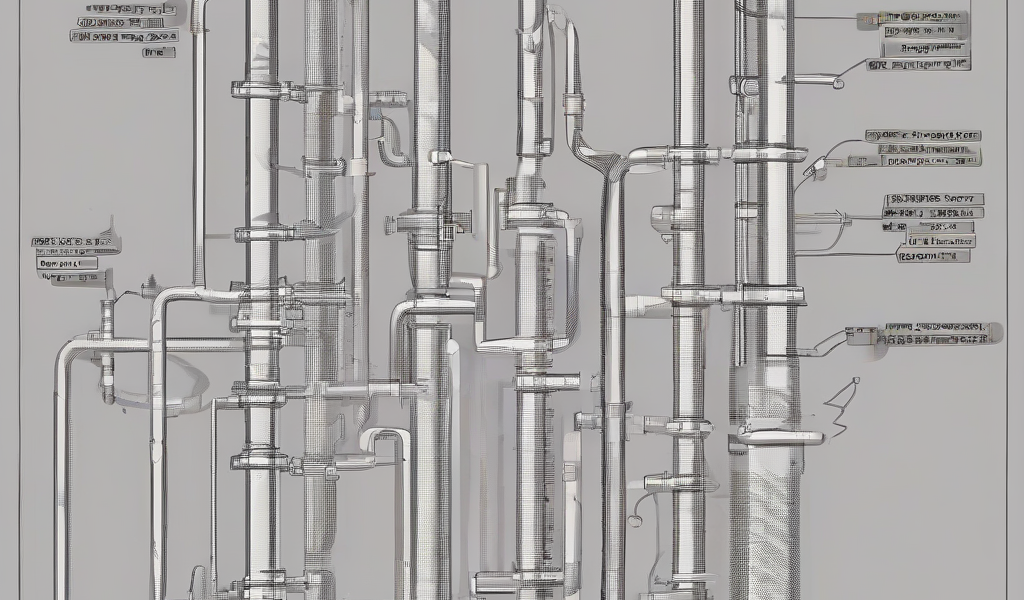Navigating the World of Heat Exchanger Vendors: A Comprehensive Guide
The selection of a heat exchanger vendor is a critical decision impacting efficiency, reliability, and the overall success of numerous industrial processes. From HVAC systems to power generation, chemical processing, and food production, the right vendor ensures optimal heat transfer performance, minimizing energy consumption and maximizing operational uptime. This comprehensive guide delves into the key considerations involved in choosing a suitable heat exchanger vendor, providing a framework for informed decision-making.
Understanding Heat Exchanger Types and Applications
Before exploring vendors, it’s crucial to grasp the diverse range of heat exchangers and their specific applications. This understanding informs the selection criteria and helps identify vendors specializing in relevant technologies.
- Shell and Tube Heat Exchangers: Widely used in various industries for their robust design and ability to handle high pressures and temperatures. Their suitability depends on the specific application’s operating conditions and fluid characteristics.
- Plate Heat Exchangers: Known for their compact design, high efficiency, and ease of cleaning. Ideal for applications requiring high heat transfer rates in a smaller footprint, but may have limitations on pressure and temperature capabilities.
- Plate and Frame Heat Exchangers: Offer flexibility in terms of plate configuration and easy maintenance. Well-suited for applications with varying flow rates and fouling potential.
- Air-Cooled Heat Exchangers: Utilize air as the cooling medium, making them suitable for applications where water is scarce or expensive. Their performance depends on ambient conditions and can be less efficient than water-cooled systems.
- Brazed Plate Heat Exchangers: Compact and efficient, often used in HVAC and refrigeration systems. Their sealed design prevents leaks, but repair is more complex.
- Spiral Heat Exchangers: Designed for applications with high fouling potential or viscous fluids. Their self-cleaning characteristics minimize downtime for maintenance.
- Scraped Surface Heat Exchangers: Ideal for highly viscous or crystallizing fluids, employing scraping mechanisms to prevent fouling and maintain efficient heat transfer.
Key Factors in Selecting a Heat Exchanger Vendor
Choosing the right vendor involves a multifaceted assessment considering various crucial aspects:
- Experience and Expertise: Prioritize vendors with a proven track record in designing, manufacturing, and supplying heat exchangers for similar applications. Look for evidence of successful projects and satisfied clients.
- Technical Capabilities: Assess the vendor’s engineering capabilities, including their ability to handle complex design requirements, perform thermal hydraulic analysis, and provide comprehensive technical support.
- Manufacturing Capabilities: Investigate the vendor’s manufacturing facilities, quality control processes, and adherence to industry standards. Ensure they possess the capacity to meet your project’s volume and timeline requirements.
- Material Selection and Compatibility: Verify the vendor’s expertise in material selection, considering factors like corrosion resistance, temperature limitations, and fluid compatibility. The right material ensures longevity and safe operation.
- Customization and Flexibility: Assess the vendor’s ability to tailor solutions to your specific needs, accommodating unique design requirements or modifications. Flexibility is crucial for non-standard applications.
- Quality Assurance and Certifications: Look for vendors with recognized certifications and quality assurance programs demonstrating their commitment to meeting industry standards and delivering high-quality products.
- After-Sales Service and Support: Consider the vendor’s commitment to providing ongoing support, including maintenance, repairs, and spare parts. Reliable after-sales service is crucial for minimizing downtime and maximizing equipment lifespan.
- Pricing and Value Proposition: While price is a factor, prioritize vendors offering a balanced value proposition, considering quality, reliability, performance, and long-term cost-effectiveness.
- Lead Times and Delivery: Inquire about the vendor’s typical lead times for manufacturing and delivery to ensure alignment with your project timeline. Delays can impact project schedules and overall costs.
- Global Reach and Local Support: If your project involves multiple locations or international collaborations, assess the vendor’s global reach and ability to provide local support and services.
Due Diligence and Vendor Selection Process
A structured approach to vendor selection is essential for making informed decisions:
- Define Requirements: Clearly specify your heat exchanger requirements, including capacity, operating conditions, fluid characteristics, and design constraints.
- Identify Potential Vendors: Research and identify potential vendors based on industry reputation, technical capabilities, and geographical location.
- Request Proposals: Send detailed requests for proposals (RFPs) to shortlisted vendors, outlining your project requirements and seeking detailed proposals including pricing and timelines.
- Evaluate Proposals: Carefully evaluate received proposals, comparing factors like pricing, technical specifications, delivery schedules, and after-sales support.
- Conduct Site Visits: If feasible, visit shortlisted vendors’ facilities to assess their manufacturing capabilities, quality control processes, and overall operational efficiency.
- Reference Checks: Contact previous clients of shortlisted vendors to obtain feedback on their performance, reliability, and customer service.
- Negotiate Contracts: Once a preferred vendor is selected, negotiate contract terms, including pricing, payment schedules, warranty provisions, and intellectual property rights.
- Monitor Performance: After the heat exchanger is installed and operational, monitor its performance to ensure it meets the specified requirements and that the vendor provides adequate support.
Emerging Trends in Heat Exchanger Technology and Vendors
The heat exchanger industry is constantly evolving, with new technologies and advancements influencing vendor offerings:
- Advanced Materials: Vendors are increasingly incorporating advanced materials like high-performance alloys, composites, and nanomaterials to improve heat transfer efficiency, corrosion resistance, and durability.
- Digitalization and IoT Integration: Smart heat exchangers equipped with sensors and data analytics are gaining prominence, enabling real-time monitoring, predictive maintenance, and optimized performance.
- Sustainable and Energy-Efficient Designs: Vendors are focusing on developing more sustainable and energy-efficient heat exchangers, minimizing environmental impact and reducing operational costs.
- Additive Manufacturing: 3D printing technologies are enabling the creation of customized and complex heat exchanger designs, offering greater flexibility and efficiency in manufacturing.
- Artificial Intelligence and Machine Learning: AI and ML are being utilized for optimizing heat exchanger design, predicting performance, and enhancing maintenance strategies.
Conclusion (Omitted as per instructions)




